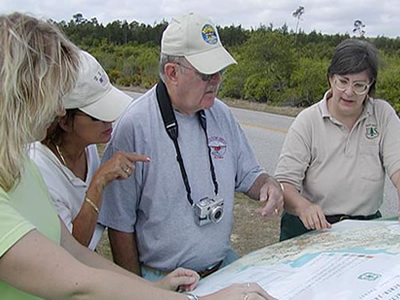Restoration
A Baseline for Restoration

For decades, people have struggled with defining ecosystem or ecological restoration. The term appears, explicitly or implicitly, in a wide range of administrative documents and scientific literature, often with strikingly different meanings. In context, each particular usage might make perfect sense. However, the Forest Service’s mission requires coherent land management policies and planning nationwide.
All or parts of national forests and grasslands need restoring when they have been:
Degraded: subtle or gradual changes that reduce the ecological integrity and health
Damaged: acute to obvious changes in the ecosystem
Destroyed: severe degradation or damage removes all macroscopic life and drastically alters the physical environment.
Land managers look to past condition as a reference point but not always a goal, largely due to other factors such as climate change, invasive species, extinction of plants or animals, and social or economic factors.
Forest Planning
The National Forest Management Act is an amendment of the Forest and Rangeland Renewable Resources Planning Act of 1974. The act:
Establishes standards for how the Forest Service manages the national forests.
Requires the development of land management plans for national forests and grasslands.
Directs the Forest Service to develop regular reports on the status and trends of the Nation’s renewable resources on all forest and rangelands.
Planning Rule
The 2012 planning rule for land management planning contain a key set of agency guidance documents that direct implementation of the rule, which helps forest managers ensure an adaptive land management planning process that is inclusive, efficient, collaborative and science-based to promote healthy, resilient, diverse and productive national forests and grasslands. The proposed directives will support consistent approaches to achieving the broad goals of the 2012 planning rule.
See Forest Service Planning Rule
